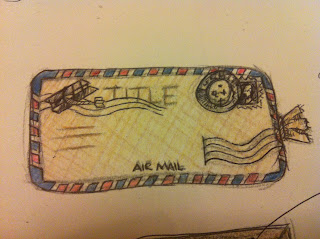In 2008 the UK became
world leader in offshore wind, and given the current pipeline of projects in
construction, is set to retain that position.
But, the recession
has caused particular problems for the UK's offshore wind sector.
Historically high material
costs combined with a falling exchange rate and the drying up of the credit market have
caused the industry to
reconsider many of
the assumptions used in Round 2
The future of Wind Farms
The
UK Government has laid down targets that are encouraging energy companies to
build 33 GW of offshore wind farms by 2020, by which time it requires to have
15% of all UK energy needs (not just electricity) supplied by renewables.
Centrica
is one of the firms to have heeded this call and is investing £3billion in
alternative energy, which includes a £300million offshore wind-farm under
construction off the Lincolnshire coast.
An
area 12 miles off the Kent and Essex coast is the proposed site of what would
be one of the world’s biggest off-shore wind-farms: the London Array. If built,
the development would feature 341 turbines, situated in the outer Thames
Estuary between the Kentish Knock and Long Sands banks.
Proponents
suggest that the Array could generate up to 1000MW of electricity – enough to
satisfy the electricity demand of about 750,000 homes each year.
The
project was recently thrown into doubt when Shell, one of the original backers,
pulled out, citing rising steel costs, marginal operating returns and problems
with the supply of wind turbines and support infrastructure (such as servicing
ships).
Issues facing wind farm construction
While
wind is never going to run out, current economic conditions mean realising the
Government’s target will be difficult. The world price of steel has increased
greatly in recent years, as has the price of turbines: suppliers such as
Siemens are currently at capacity. As a result, the estimated cost of
delivering the plan has increased from £40bn to £80bn. Once built,
though, the costs of electricity produced by wind farms is not dependent on
global fuel markets, as would be the case to varying degrees for gas, coal and
nuclear power plants.
Wind farms in the
UK
As
any cyclist will tell you, the UK is not short of wind. Studies suggest that we
have 40% of Europe’s supply, making wind power a potentially attractive source
of renewable energy, although it currently accounts for only 0.5% of
electricity supplied.
The
government has mandated that 10% of UK electricity should be renewable by 2010,
and it is suggested that three-quarters of that would be supplied by
wind-power. Much has to be done if this target is to be achieved.
Locations for wind farms
As
turbines need a good, uninterrupted supply of wind to operate efficiently, they
tend to be sited on remote, hilly and coastal locations – which are often
greatly valued for their wildlife and undeveloped, ‘natural’ aesthetic.
In
April 2008, planning permission for the UK’s largest onshore windfarm, a
£500million, 181 turbine project on the Island of Lewis, was rejected by the Scottish
Government due to its likely impact on birdlife.
Off-shore wind farms
Being
out of sight, off-shore farms are generally better received. Turbines have been
operating offshore in the UK, Denmark and Germany, for example, for several
years with a good reliability record. There is some evidence to show that
offshore turbines interfere with maritime radar, and this is being
investigated. It is also thought that, being off-limits to fishing boats,
off-shore wind-farms may act as mini-marine sanctuaries and provide safe
hatcheries for some fish species.






